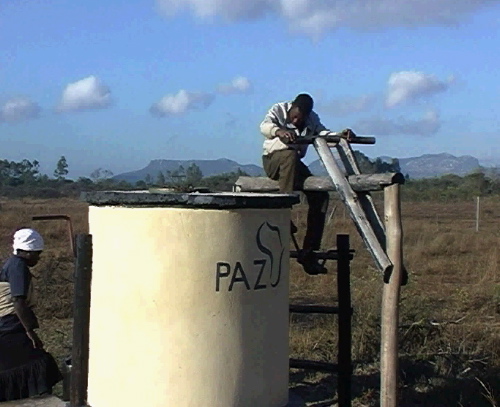Here’s an interesting simple, low-maintenance technology:
“Elephant Pumps” that were introduced to rural areas in Zimbabwe and Malawi during the last few years. These rather simple, enhanced rope pumps (based on an ancient Chinese technology) where designed for use in rural areas, where the supply of readymade spare parts isn’t that easy.

Now, what makes the Elephant Pump so different from the other popular low-maintenance pump “Afripump” is that it’s locally assembled and maintainable by the local community. Both systems – Afripump and Elephant Pump – may have their pro & cons (80-100m depth, high durability, low-maintenance vs. <40m depth, simple design, cheaper), but I especially like the “bicycle option” added to pumps which were built for schools:
On school pumps Pump Aid often incorporates a “bicycle” system onto the Elephant Pump since this has proved enormously popular with children. Most children in Zimbabwe have never had the chance to ride a bicycle so can even come to school early to “play” on the pump thereby helping to fill the school water tanks. The job of collecting water, once a tiresome chore, becomes fun and children no longer have to leave their classrooms to walk miles carrying buckets of water on their heads from a distant muddy pool.
The British Charity Org “Pump Aid“, which has in the past introduced and promoted these systems in Zimbabwe and Malawi for the costs of GBP 250 (~ USD 460, EUR 310) each, also created a very informative video on how the technology actually works:
“The Elephant Pump yields about one litre of clean water every second for an average well depth of 20 metres.”
It’s simple, it works, it wins! 🙂
[h/t NextBillion.net]

